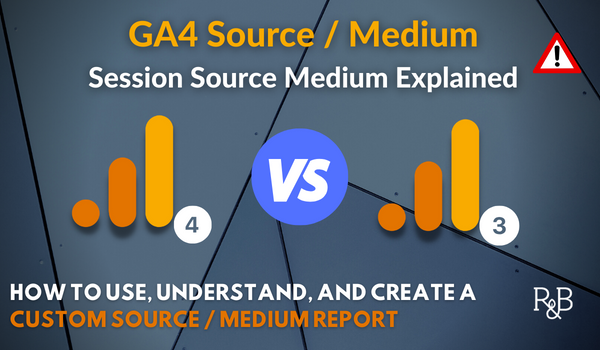Unlocking Secondary Dimensions in Google Analytics: Definition and Practical Use Instances Discovered
Unlocking Secondary Dimensions in Google Analytics: Definition and Practical Use Instances Discovered
Blog Article
Taking Advantage Of the Power of Secondary Measurement in Google Analytics to Improve Your Marketing Strategy and Drive Outcomes
In the realm of digital advertising, the ability to adjust approaches and achieve substantial results is critical for organizations making every effort to stay competitive in today's landscape. Leveraging the power of second measurements within Google Analytics opens a world of opportunities for marketers looking for to acquire deeper insights into individual habits and customize their campaigns with precision. By unearthing hidden patterns and refining target market segmentation, businesses can craft targeted techniques that resonate with their customers on an extensive degree. The potential to gauge project performance with a granular lens even more emphasizes the significance of harnessing this tool to drive success.
Understanding Additional Measurements
When assessing information in Google Analytics, recognizing secondary dimensions is critical for gaining much deeper understandings right into customer habits and site efficiency. Primary measurements provide basic details such as the number of customers or sessions, but secondary dimensions provide an even more in-depth sight by permitting customers to sector and examine data additionally. By adding a second dimension, marketers can refine their evaluation and uncover beneficial patterns that may have otherwise gone unnoticed.
Additional dimensions in Google Analytics can be related to various metrics such as traffic sources, user demographics, and behavior circulation. As an example, by incorporating the main measurement of 'landing web pages' with the secondary measurement of 'gadget classification,' marketing experts can determine which devices are driving website traffic to particular landing pages. This info can help optimize web site design and web content for far better user experience across various tools
Studying Customer Habits Patterns
To efficiently understand user habits patterns, a thorough evaluation of information within Google Analytics is crucial. By diving right into individual habits patterns, marketing experts can acquire useful understandings into exactly how visitors interact with their web site, which web pages are most appealing, and where prospective bottlenecks or drop-off points may exist in the conversion channel. Google Analytics supplies a variety of tools to examine individual actions, such as behavior circulation records, event monitoring, and goal funnels.
Behavior circulation records offer a graph of just how users browse via the website, showing one of the most common courses individuals take in addition to where they leave. Occasion tracking enables marketing professionals to keep track of particular interactions on the website, such as button clicks or video clip sights, offering a much deeper understanding of user involvement. Objective funnels track the actions users take towards finishing a details goal, highlighting locations for improvement in the conversion procedure.
Enhancing Target Market Division
Upon examining individual behavior patterns, marketers can additionally optimize their approaches by enhancing target market division methods in Google Analytics. Target market division enables the classification of website site visitors into specific groups based on numerous qualities such as demographics, habits, and rate of interests. By using Google Analytics' secondary dimensions, marketing experts can improve these sectors even additionally to acquire much deeper insights right into their target market's choices and activities.
Enhancing target market division makes it possible for marketing professionals to produce more targeted and individualized advertising and marketing campaigns. By identifying distinct individual teams, marketing professionals can customize their messaging, web content, and supplies to much better resonate with each segment's distinct characteristics and demands. This level of customization can significantly improve involvement, conversion rates, and total advertising efficiency.
Moreover, via enhanced target market division, marketing professionals can much better recognize the customer journey and enhance touchpoints along the path to conversion. By evaluating how various sections connect with the site and advertising official website channels, online marketers can determine opportunities to enhance individual experience, address discomfort points, and inevitably drive even more conversions. In general, refining target market division in Google Analytics is a powerful technique for optimizing marketing efficiency and driving sustainable service growth.
Tailoring Advertising And Marketing Campaigns
Online marketers can optimize their advertising projects by personalizing web content and messaging to suit the special qualities and requirements of details audience sectors. By leveraging insights from additional dimensions in article source Google Analytics, marketers can obtain a deeper understanding of their target market's behavior, preferences, and demographics.
Via the analysis of second dimensions such as website traffic sources, tools utilized, or geographical area, marketing professionals can tweak their messaging to be a lot more pertinent and impactful. By tailoring advertising and marketing campaigns based on insights from secondary measurements, businesses can optimize the effectiveness of their initiatives and ultimately drive better ROI.
Measuring Campaign Efficiency

One critical aspect of gauging campaign efficiency is tracking conversions. By establishing objectives in Google Analytics, companies can check specific activities taken by individuals as a result of the campaign, such as buying or signing up for a newsletter. Recognizing the conversion rate and the conversion course can offer useful understandings right into the performance of various marketing networks and messages.
Moreover, evaluating metrics such as click-through prices, bounce rates, and session duration can aid online marketers evaluate customer interaction and the effect of the campaign on web site traffic. By combining key metrics with additional measurements in Google Analytics, businesses can fine-tune their marketing techniques, maximize campaign performance, and drive better outcomes.
Verdict
Finally, taking advantage of the top article power of second dimensions in Google Analytics can supply useful understandings into customer behavior patterns, improve audience segmentation, tailor advertising and marketing projects, and measure project efficiency. By using this function successfully, companies can fine-tune their advertising and marketing techniques and drive far better results. It is important for online marketers to take advantage of the data offered through secondary dimensions to make educated decisions and enhance their campaigns for optimal impact.

Report this page